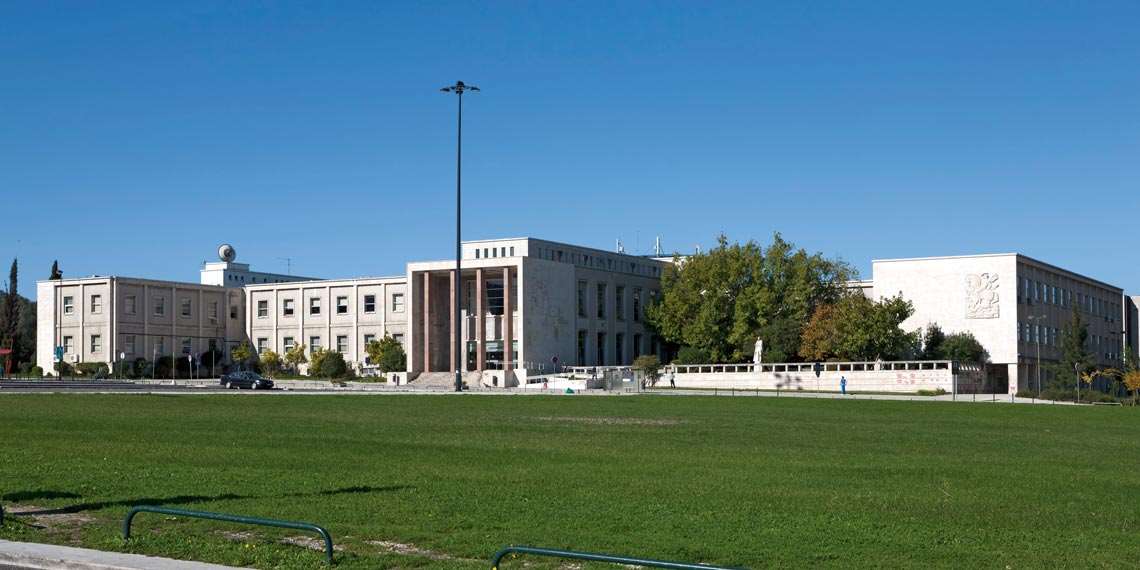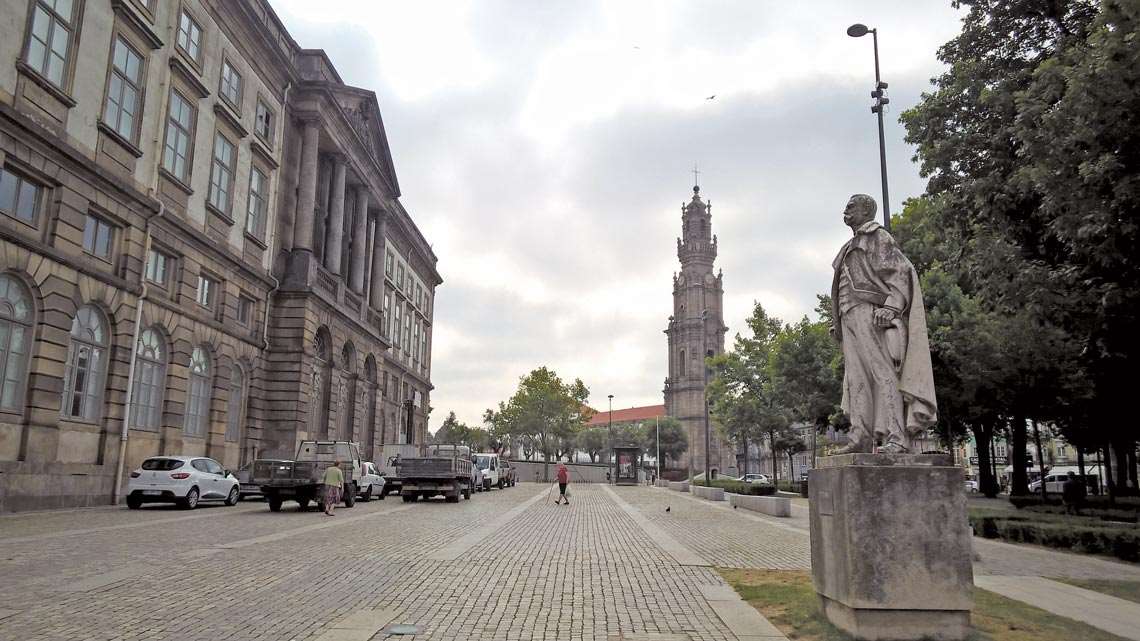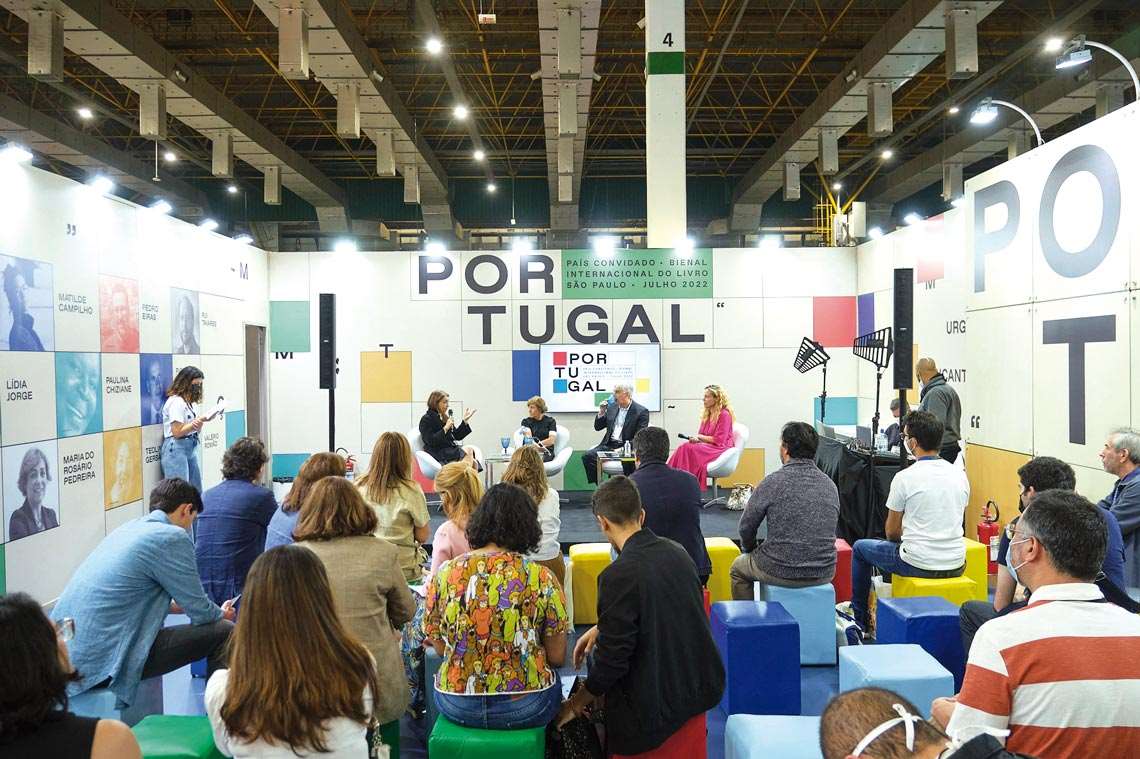As doenças do Brasil (The diseases of Brazil), published in November 2021 by Biblioteca Azul, is not about viruses or bacteria, but the massacre of indigenous people throughout the Portuguese colonization in Brazil. Its author, Valter Hugo Mãe, and another 20 Portuguese writers were at the São Paulo International Book Biennial to talk about their novels with the Brazilian public.
The Book Biennial, with an estimated 600,000 visitors, was an exception in cultural relations between Brazil and Portugal. The interaction usually develops in meetings with much smaller audiences, in debates at universities, or even without an audience, based on cooperation agreements between federal and state research agencies. The Brazilian Federal Agency for Support and Evaluation of Graduate Education (CAPES) retains 352 university professors and PhD students in Portugal and in November will send 100 elementary school teachers for a six-week internship to the Polytechnic Institute of Porto and the University of Porto. Since 1997, as a result of a cooperation agreement with the Portuguese Foundation for Science and Technology (FCT), FAPESP has funded 81 scientific investigation projects and 55 grants, at a cost of approximately R$11.6 million. The Rio de Janeiro State Research Foundation (FAPERJ) also has a partnership with the FCT, with which it issued several calls for research projects—the most recent, in 2019, approved five proposals at a total cost of R$320,000.
The Brazilian Embassy in Portugal estimates there are around 10,000 Brazilian undergraduate and graduate students currently in the European country. In 2021, a survey by the embassy received 383 replies from researchers, professors, graduate students, and entrepreneurs from the areas of exact and biomedical sciences. The majority lived in Lisbon (197), followed by Braga (33), and Coimbra (27), were female (216), and were dedicated to applied research (177), especially into new energies.
Exact sciences—especially particle physics, astrophysics, electrical engineering, chemistry, and material sciences—predominated among the areas of most intense cooperation in a study published in October 2020 in the academic journal Lex Humana. Its authors—science and technology analyst from CAPES Elenara Almeida and social scientist Pedro Correia, from the University of Lisbon (UL)—verified that joint production between Brazilian and Portuguese researchers has grown: from 34 scientific articles published from 1980 to 1990 to 7,764 from 2005 to 2015 in the Web of Science repository. The University of São Paulo (USP), the Federal University of Rio de Janeiro (UFRJ), and São Paulo State University (UNESP) in Brazil, and the universities of Lisbon, Porto, and Minho, in Portugal, stand out among the institutions with the greatest collaboration between the two countries.

Wikimedia CommonsUniversitie of Lisbon…Wikimedia Commons
Growing interaction
“Since Portugal’s democratic transition in the 1970s, contact between communities of Portuguese and Brazilian social scientists has increased a lot,” observes historian António Costa Pinto, from the Institute of Social Sciences of the University of Lisbon (ICS-UL). According to him, cooperation between the two countries began to increase in the areas of sociology, anthropology, and history in the 1980s through agreements between the FCT and Brazilian institutions, exchanges of researchers and students, congresses that united researchers from Portuguese speaking countries, and the creation of the Luso-Afro-Brazilian Association of Social Sciences, in 1996. One result of the growing interaction was an audiovisual history of social sciences project in Portuguese-speaking countries, carried out from 2008 to 2015, under the coordination of the Getulio Vargas Foundation of Rio de Janeiro, which joined over 100 biographies, such as those by Anália Torres and Boaventura de Sousa Santos, from Portugal, Carlos Machili and Isabel Casimiro from Mozambique, and Brazilians Boris Fausto and Gilberto Velho (1945–2012).
“The cooperation between the two countries has consolidated and has now reached a phase of maturity. It no longer requires stimulation, it exists naturally,” says Costa Pinto. Dedicated to the study of authoritarian regimes in Portugal and Latin America, in June he took part in an online seminar promoted by the Institute for Advanced Studies (IEA) at USP. In his opinion, the SciELO electronic library, created by FAPESP in 1997, has contributed a lot to increasing cooperation between the two countries, “by giving visibility to Ibero-American academic production and favoring an approximation of the methodologies of scientific works.”
Contemporary studies
The research priorities have also changed. Like Costa Pinto, Francisco Martinho, a historian from Rio de Janeiro and USP’s School of Philosophy, Languages and Literature, and Human Sciences (FFLCH-USP), observes that until the 1990s the majority of Brazilian historians that went to Portugal worked on the colonial period, since the documentation was there, but interest in contemporary studies, such as the economic and cultural relations between the Portuguese-speaking countries, increased little by little. The life of Brazilian political exiles in Portugal and Portuguese exiles in Brazil, for example, has been studied extensively in the universities of São Paulo, Rio de Janeiro, Porto Alegre, and Lisbon.
Martinho’s academic career illustrates the diversity of themes to be explored. In 1994, upon completing his master’s on unionism in Brazil at the Federal University of Rio de Janeiro (UFRJ), he began a PhD about Portuguese unionism, also at UFRJ. Son of a Portuguese father and Spanish mother, he spent several periods researching in Portugal.
On completion of his PhD, he wrote a biography of law professor Marcelo Caetano (1906–1980), the last prime minister of the Salazar regime (1933–1974). He then turned his attention to the careers of two Portuguese militant socialists, writer Antero de Quental (1842–1891) and his intellectual heir, educationist António Sérgio (1883–1969).
Since 2014, Martinho has been working on the biography of Amália Rodrigues (1920–1999) with support from the Brazilian National Council for Scientific and Technological Development (CNPq). The decision to research her career came from the realization that few colleagues from Rio and São Paulo knew of the fado singer, despite her success in Brazil during the 1980s, unlike the familiarity in Portugal with the works of Brazilian singers and songwriters such as Maria Bethânia, Gilberto Gil, and Roberto Carlos. “The average Portuguese person knows more about our culture than the average Brazilian about theirs,” says Martinho.

Wikimedia Commons…and Porto universitie among the main partner institutions of BrazilWikimedia Commons
In the large cities in Portugal, radios frequently play Brazilian music, especially bossa nova, and it is easy to find Havaianas flip flops and cosmetics with ingredients from the Amazon for sale. With around 200,000 Brazilians living in Portugal, “it is impossible to take the bus or train and not hear someone speaking Brazilian Portuguese,” Martinho observes. Since 1977, with Gabriela, Brazilian soap-operas have also been a success on Portuguese TV.
“The Portuguese media gives more importance to Brazil than vice versa,” Costa Pinto reiterates. He and Martinho are coordinating a dossier for the journal Varia História, of the Federal University of Minas Gerais (UFMG), about the political transition to democracy in the two countries, with participation from other Brazilian and Portuguese historians, to be published in 2023.
Scientific collection
Partnerships are also born from conversations between researchers. In 2006, teams from the Museum of Astronomy and Related Sciences (MAST), in Rio de Janeiro, linked with CNPq, and from the National Museum of Natural History and Science (MUHNAC), of the UL, initiated a collaboration. One of the results was reported in an article published seven years later in the journal Ciência da Informação. The Thesaurus of scientific collections in Portuguese project, completed in 2013, united 14 Portuguese and Brazilian institutions and resulted in the definition, with photos, of 1,153 antique scientific instruments, from an abacus to a wattmeter (for measuring electric power) for lightbulbs.
“The collaboration continues,” says Marcus Granato, coordinator of the MAST museology team (see Pesquisa FAPESP issue nº 228). From 2014 to 2017, Brazilian researchers, with consultancy from Portuguese specialists, worked on a survey about Luso-Brazilian cultural heritage of science and technology which led to the identification of 65,000 antique instruments used in engineering, physics, and geosciences, in around 950 Portuguese institutions, and roughly 30,000 similar objects in 337 Brazilian organizations.
For political scientist Mathias Alencastro, from the Brazilian Center for Analysis and Planning (CEBRAP), the underlying stereotypes of the academic relations between Brazil and Portugal are unfounded. “Lisbon is a cosmopolitan city and a knowledge hub, where high level research is done,” he observes. “The perception of Brazil by the Portuguese has evolved a lot.”
Son of a Brazilian father and Portuguese mother, he considers himself to be “the fruit of scientific cooperation between Portugal and Brazil.” With an FCT grant, he did a PhD at the University of Oxford, UK, between 2009 and 2014. Then, with FAPESP support, he did a PhD fellowship about Angola and verified that large Brazilian companies helped mold government policy, as he explained in an article published in January 2020 in the journal Novos Estudos. In another study, the results of which were presented in Revista de História in 2019, he showed how Brazilian multinationals replaced local companies in diamond mining, one of the foundations of the Angolan economy. Afterwards he joined ICS-UL and returned to São Paulo in March 2020.
“Our challenge is to think of scientific cooperation between Brazil, Portugal, and Angola without being held hostage to colonial memory and looking to the next 200 years, and not to the past 200,” says Alencastro. “The status of a former colony no longer reflects the feeling of those living in Angola and Mozambique, because colonialism is a distant memory.”
Projects
1. African policy of Brazilian multinationals: Odebrecht in Angola, 2002–2017 (nº 17/13092-1); Grant Mechanism Postdoctoral Fellowship; Supervisor Maria Hermínia Brandão Tavares de Almeida (CEBRAP); Beneficiary Mathias Jourdain de Alencastro; Investment R$447,013.92.
2. The policies of Brazilian multinationals in Africa: Vale in Mozambique (nº 19/00844-0); Grant Mechanism Postdoctoral Fellowship; Supervisor Maria Hermínia Brandão Tavares de Almeida (CEBRAP); Beneficiary Mathias Jourdain de Alencastro; Investment R$199,238.71.
Scientific articles
ALENCASTRO, M. A Odebrecht e a formação do Estado angolano (1984-2015). Novos Estudos. vol. 39, no. 1, pp. 125–41. jan. 2020.
ALENCASTRO, M. Diamantes, desenvolvimento e conflito: O papel do setor mineiro na política de Estado e de guerra no Estado colonial tardio de Angola, 1961-1974. Revista de História. no. 178, a02418, pp. 1–27. nov. 7, 2019.
ALMEIDA, E. C. E. de & CORREIA, P. M. A. R. Produção científica entre Brasil e Portugal: Um estudo comparativo dos períodos 1890-1990 e 2005-2015. Lex Humana. vol. 12, no. 1, pp. 17–37. june 2020.
GRANATO, M. & LOURENÇO, M. C. Preservação do patrimônio cultural de ciência e tecnologia: Uma parceria luso-brasileira entre o Museu Nacional de História Natural e da Ciência (Portugal) e o Museu de Astronomia e Ciências Afins (Brasil). Ciência da Informação. vol. 42, no. 3, 435–53. sept. 2013.
